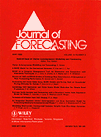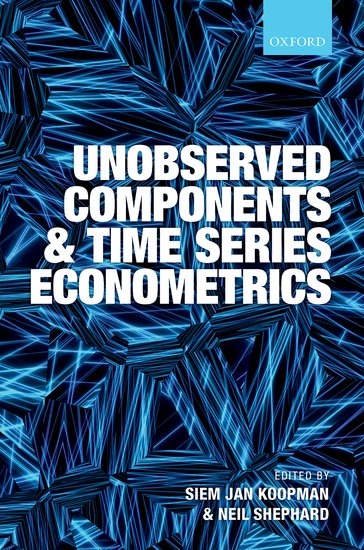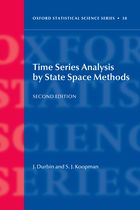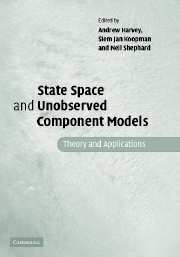Professor of Econometrics
Vrije Universiteit Amsterdam
Tinbergen Institute
Software development
For more information, please visit webpage of
Timberlake Consultants.
OxMetrics
OxMetrics is a family of software packages
providing an integrated solution for the
econometric analysis of time series, forecasting,
financial econometric modelling
and statistical analysis of cross-section and panel data.
The core packages of the family are OxMetrics desktop,
which provides the user interface, data handling,
and graphics, and
Ox Professional™,
which provides the implementation language.
The other elements of the OxMetrics family are interactive,
easy-to-use and powerful tools
that can help solve your specific modelling and forecasting needs.
STAMP (version 9.00)
STAMP™ is a package designed to model and forecast time series,
based on structural time series models. These models use advanced techniques,
such as Kalman filtering, but are set up so as to be easy to use -- at the most basic
level all that is required is some appreciation of the concepts of trend, seasonal and irregular.
The hard work is done by the program, leaving the user free to concentrate on formulating models,
then using them to make forecasts.
Structural time series modelling can be applied to a variety of problems in time series.
Macro-economic time series like gross national production, inflation and consumption can be
handled effectively, but also financial time series, like interest rates and stock market v
olatility, can be modelled using STAMP.
Further, STAMP is used for modelling and forecasting
time series in medicine, biology, engineering, marketing and in many other areas.
The current version Stamp 9.00 has been released in July 2022.
The
STAMP™ workpage
includes links to interesting empirical research
where STAMP has been used.
SsfPack (version 3.00)
SsfPack™
is a suite of C routines for carrying out computations
involving the statistical analysis of univariate and multivariate
models in state space form. The implemented link to these routines
is established for
Ox 2.0 and higher,
the object-oriented matrix programming
language of OxMetrics.
SsfPack
allows for a full range of different
state space forms: from a simple time-invariant model to a complicated
time-varying model. Functions can be used which put standard models such
as ARIMA and cubic spline models into state space form. Basic functions
are available for filtering, moment smoothing and simulation smoothing.
Ready-to-use functions are provided for standard tasks such as likelihood
evaluation, forecasting and signal extraction.
SsfPack
can be easily used
for implementing, fitting and analysing Gaussian models relevant to many
areas of econometrics and statistics.
The current version SsfPack 3.00 has been released in August 2008.
For further information, see the
SsfPack™
workpage.
An updated and modified version of SsfPack is used for the state space methods in
Time Series Lab where
you can carry out time series analysis, modelling and prediction in a user-friendly environment.
Editorial work
Co-editor.

Book projects
Koopman and Shephard book
Unobserved Components and Time Series Econometrics.
Proceedings of a Conference in Honour of Andrew Harvey. 2015,
with N. Shephard, pp. 400, Oxford University Press.

This volume presents original and up-to-date studies in unobserved components (UC) time series models from both theoretical and methodological perspectives. It also presents empirical studies where the UC time series methodology is adopted. Drawing on the intellectual influence of Andrew Harvey, the work covers three main topics: the theory and methodology for unobserved components time series models; applications of unobserved components time series models; and time series econometrics and estimation and testing. These types of time series models have seen wide application in economics, statistics, finance, climate change, engineering, biostatistics, and sports statistics.
The volume effectively provides a key review into relevant research directions for UC time series econometrics and will be of interest to econometricians, time series statisticians, and practitioners (government, central banks, business) in time series analysis and forecasting, as well to researchers and graduate students in statistics, econometrics, and engineering.
Durbin and Koopman Second Edition book
Time Series Analysis by State Space Methods, Second Edition.
2012, with J. Durbin, Oxford University Press.

This new edition updates Durbin & Koopman's important text on the state space approach to time series analysis. The distinguishing feature of state space time series models is that observations are regarded as made up of distinct components such as trend, seasonal, regression elements and disturbance terms, each of which is modelled separately. The techniques that emerge from this approach are very flexible and are capable of handling a much wider range of problems than the main analytical system currently in use for time series analysis.
Additions to this second edition include the filtering of nonlinear and non-Gaussian series.
Part I of the book obtains the mean and variance of the state, of a variable intended to measure the effect of an interaction and of regression coefficients, in terms of the observations.
Part II extends the treatment to nonlinear and non-normal models. For these, analytical solutions are not available so methods are based on simulation.
For workpage of the Second Edition, please click here.
Commandeur and Koopman book
An Introduction to State Space Time Series Analysis. 2007,
with Jacques J.F. Commandeur pp. 192, Oxford University Press.

Providing a practical introduction to state space methods as applied to unobserved
components time series models, also known as structural time series models, this
book introduces time series analysis using state space methodology to readers who
are neither familiar with time series analysis, nor with state space methods.
The only background required in order to understand the material presented in
the book is a basic knowledge of classical linear regression models, of which a
brief review is provided to refresh the reader's knowledge. Also, a few sections
assume familiarity with matrix algebra, however, these sections may be skipped
without losing the flow of the exposition.
The book offers a step by step approach to the analysis of the salient features
in time series such as the trend, seasonal, and irregular components. Practical
problems such as forecasting and missing values are treated in some detail. This
useful book will appeal to practitioners and researchers who use time series on a
daily basis in areas such as the social sciences, quantitative history, biology and
medicine. It also serves as an accompanying textbook for a basic time series course
in econometrics and statistics, typically at an advanced undergraduate level or graduate level.
For workpage of the book, please click here.
Harvey, Koopman and Shephard book
State Space and Unobserved Component Models: Theory and Applications.
Proceedings of a Conference in Honour of James Durbin. 2004,
with A. Harvey and N. Shephard, pp. 393, Cambridge University Press.

This volume offers a broad overview of the state-of-the-art developments in the theory and
applications of state space modeling. With fourteen chapters from twenty-three contributors,
it offers a unique synthesis of state space methods and unobserved component models that are
important in a wide range of subjects, including economics, finance, environmental science,
medicine and engineering. The book is divided into four section: introductory papers, testing,
Bayesian inference and the bootstrap, and applications. It will give those unfamiliar with state
space models a flavour of the work being carried out as well as providing experts with valuable
state of the art summaries of different topics. Offering a useful reference for all, this accessible
volume makes a significant contribution to the advancement of this discipline.
Durbin and Koopman book
Time Series Analysis by State Space Methods.
2001, with J. Durbin, Oxford University Press.

This book presents a comprehensive treatment of the state space approach
to time series analysis. The distinguishing feature of state space time series
models is that observations are regarded as made up of distinct components such
as trend, seasonal, regression elements and disturbance elements, each of which
is modelled separately. The techniques that emerge from this approach are very
flexible and are capable of handling a much wider range of problems than the main
analytical system currently in use for time series analysis, the Box-Jenkins ARIMA system.
For workpage of the book, please click here.






